15 Bulbs to Plant in Fall for a Beautiful Showing Next Spring
Get a headstart on next year's blooms by planting bulbs in autumn.
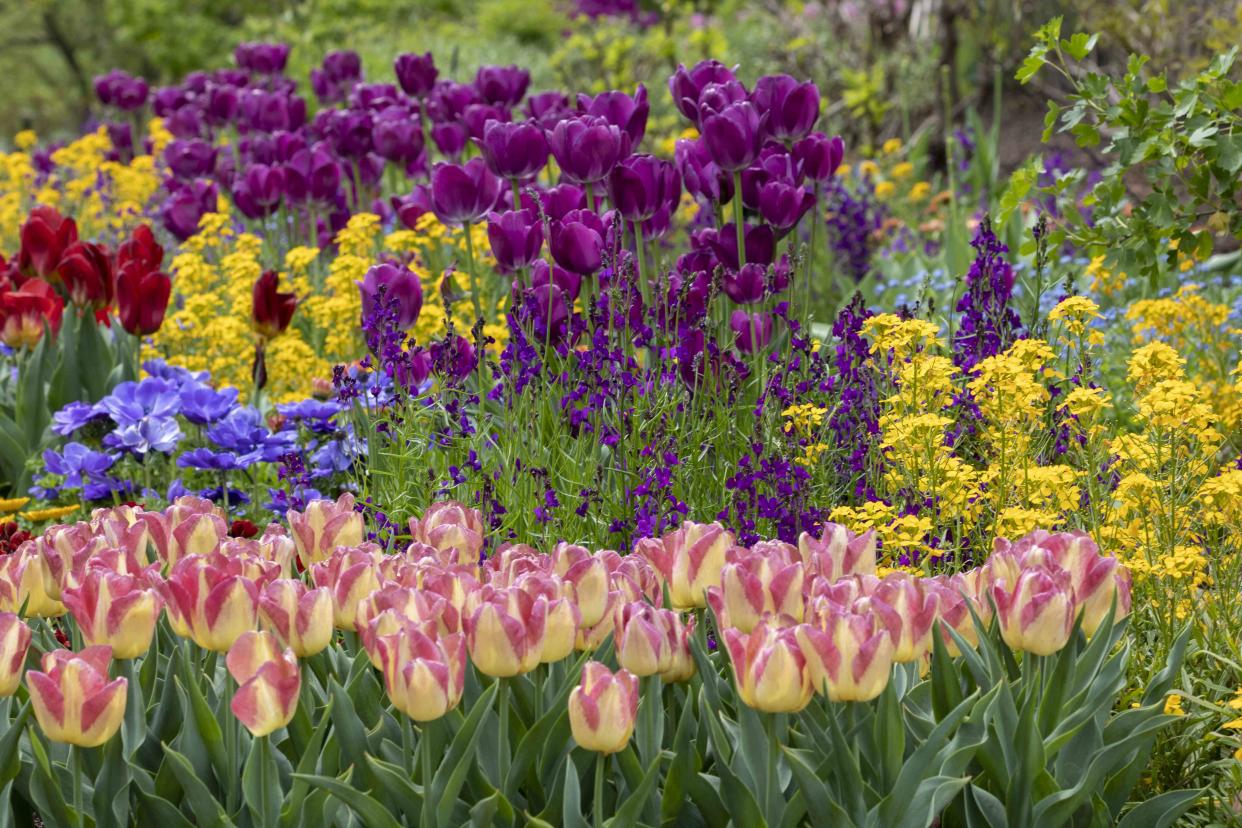
Fall is the perfect time to plant spring-flowering bulbs like tulips and daffodils since they need cold winter temperatures to break them out of their dormancy. After this, the flowers will begin their bloom cycle.
But with so many spring-flowering bulbs available, it can be difficult to choose which ones to plant in your landscape. To help, we spoke to flower experts who shared their selections for the best spring-flowering bulbs to plant during fall.
Make sure to get these bulbs in the ground before it freezes, which will vary depending on where you live. According to our experts, this can be as early as October for cooler regions, while warmer locales can wait until December.
Meet the Experts
Marryn Mathis, owner of The Farmhouse Flower Farm and author of Sweet Pea School: Growing and Arranging the Gardens Most Romantic Blooms
Amy Yarger, senior director of horticulture at the Butterfly Pavilion, the first Association of Zoos and Aquariums-accredited invertebrate nonprofit zoo in the world.
Luay Ghafari, garden consultant and published author and founder of Urban Farm and Kitchen
Related: Where to Buy Flower Bulbs Online for Gorgeous Year-Round Blooms
Tulips
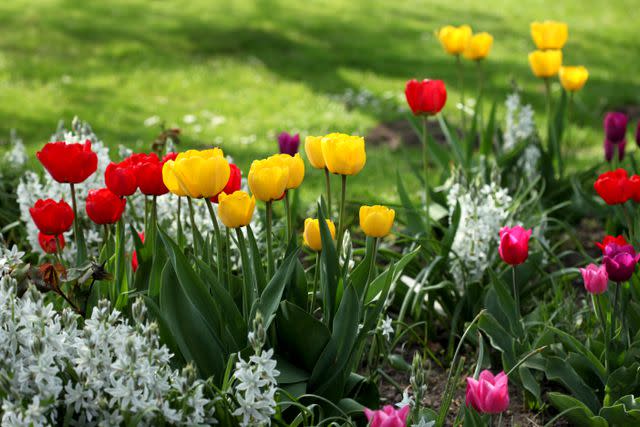
lubilub / Getty Images
Tulips (Tulipa) are a popular springtime flower—but they need to be planted in the fall to ensure they bloom in spring. “A spring essential, these gorgeous blooms not only make a great cut flower but come in a rainbow of colors, sizes, and shapes,” says Marryn Mathis, owner of The Farmhouse Flower Farm, adding that tulips have varying bloom times. “Some are early, mid, and late season bloomers, so you can layer different varieties throughout your garden to extend your season.”
Zones: 3 to 8
Size: 9 to 24 inches tall x 6 to 9 inches wide
Care requirements: Full sun; well-draining soil
Related: How to Grow and Care for Tulips, the Low-Maintenance Spring Bloomer Every Gardener Should Plant
Hyacinths
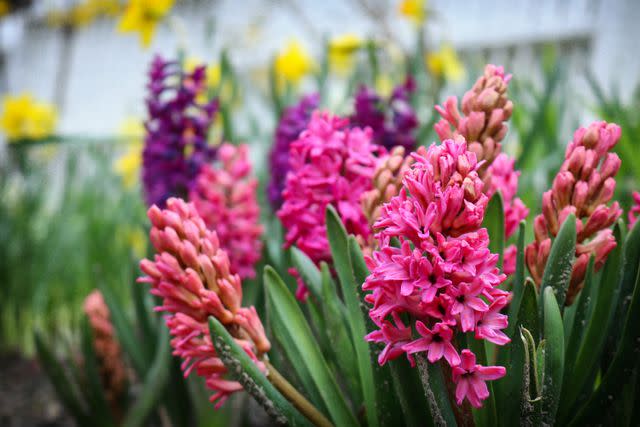
Katrin Ray Shumakov / Getty Images
Hyacinths (Hyacinthus) are beautiful flowers to have in a spring garden. “If you're looking for extremely fragrant blooms, hyacinths are a wonderful addition,” says Mathis. However, she points out that the flowers are relatively short-lived, so they make a lovely pairing when layered with other spring blooms.
Zones: 4 to 8
Size: 6 to 12 inches tall x 3 to 6 inches wide
Care requirements: Full to partial sun; well-draining soil
Daffodils
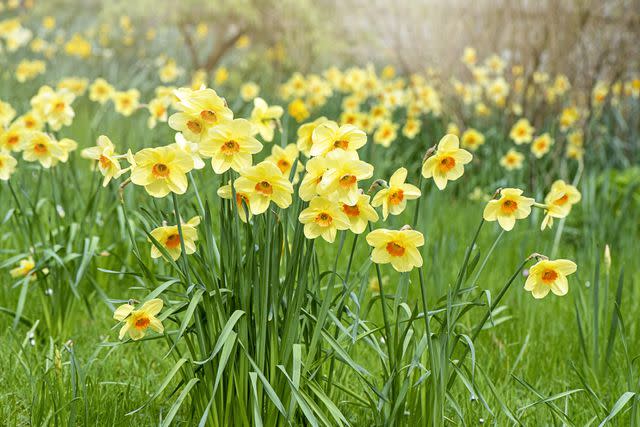
Jacky Parker Photography / Getty Images
A perennial, daffodils (Narcissus) are another springtime staple that should be planted in fall. “They come in an array of lovely creams, peaches, apricots, yellows, and oranges,” says Mathis. “And they are one of the first blooms of spring.”
Zones: 4 to 8
Size: 6 to 30 inches tall x 6 to 12 inches wide
Care requirements: Full to partial sun; well-draining soil
Related: Martha's Top Tips for Planting Daffodil Bulbs
Dwarf Iris
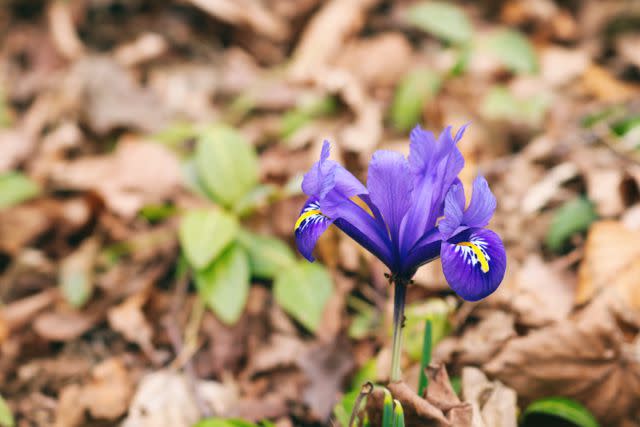
Katrin Ray Shumakov / Getty Images
Dwarf iris (Iris reticulata) appear in late winter and early spring. “Not only are they very hardy, but they are also brilliantly colored, ranging from yellow to bronze to different shades of purple," says Amy Yarger, senior director of horticulture at the Butterfly Pavilion. Bumble bee queens, honeybees, and even butterflies like to visit these flowers, too, making them great for a pollinator garden. Plant these flowers in sunny or part-sunny spots.
Zones: 3 to 9
Size: 12 to 40 inches tall x 12 to 24 inches wide
Care requirements: Full sun; well-draining soil
Snowdrops
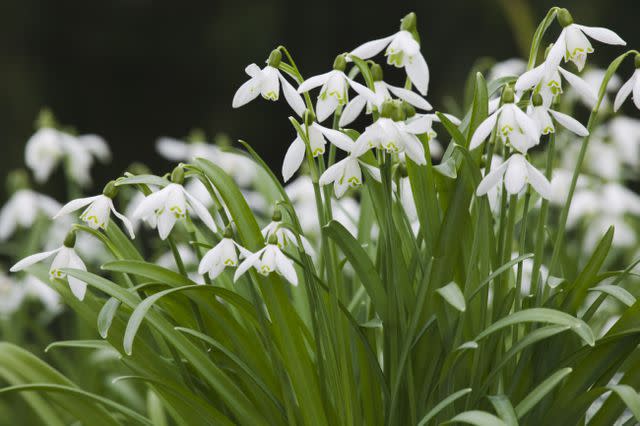
Nigel Hicks / Getty Images
Snowdrops (Galanthus) arrive early in spring. “Honeybees hungrily visit these flowers as soon as these elegant white blooms pop out of the ground,” says Yarger. So, add these flowers for the pollinators. “Snowdrops prefer some spring moisture, so you may need to water lightly during bloom season. They even tolerate clay soil.” They like to be planted in sunny or partially sunny spots, like below deciduous shrubs.
Zones: 3 to 7
Size: 4 to 10 inches tall x 3 to 6 inches wide
Care requirements: Full to partial sun; loamy, sandy, well-draining soil
Related: 11 Perennials to Plant in the Fall for Stunning Spring Blooms
Alliums
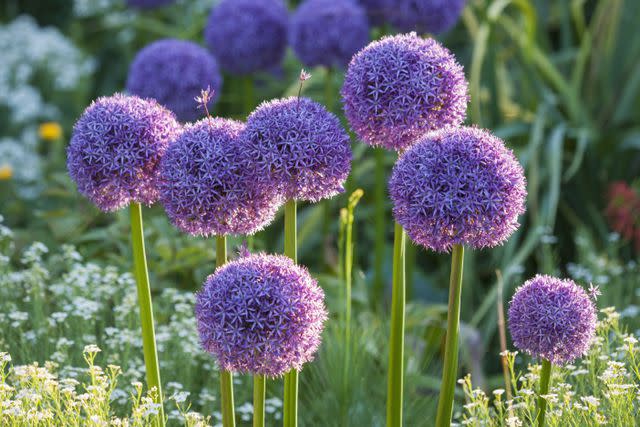
Clive Nichols / Getty Images
With their purple and white round flower heads, alliums are a great addition to a flower garden. “Because each stem supports multiple blossoms, they can be very attractive to bees and butterflies,” says Yarger. While these bulbs are much bigger and require a deeper planting hole, the flowers are worth it as they create so much visual interest. “They prefer bright, sunny sites and are resistant to deer and rabbits.”
Zones: 4 to 10
Size: 1 to 4 feet tall x 3 to 10 inches wide
Care requirements: Full sun; all but must be well-draining soil
Foxtail Lily
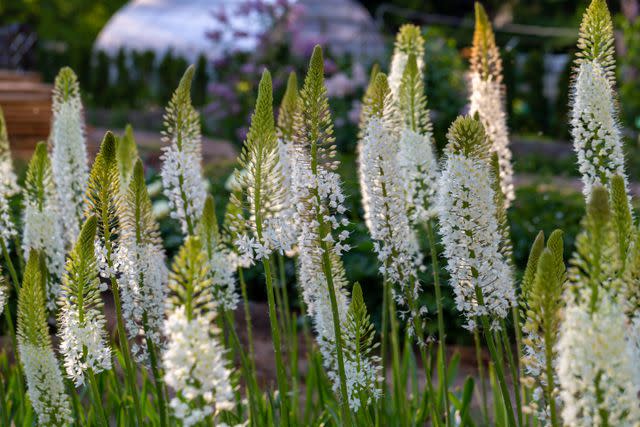
Olga Seifutdinova / Getty Images
Foxtail lilies (Eremurus robustus) might be some of the showiest bulbs you can plant. “In late spring, their shape and height make them look like exclamation points in the garden, a great example of a garden showstopper,” says Yarger. And bees love these flowers for their pollen and nectar.
Zones: 5 to 8
Size: 3 to 8 feet tall x 2 feet wide
Care requirements: Full sun; sandy, loamy, well-draining soil
Anemones
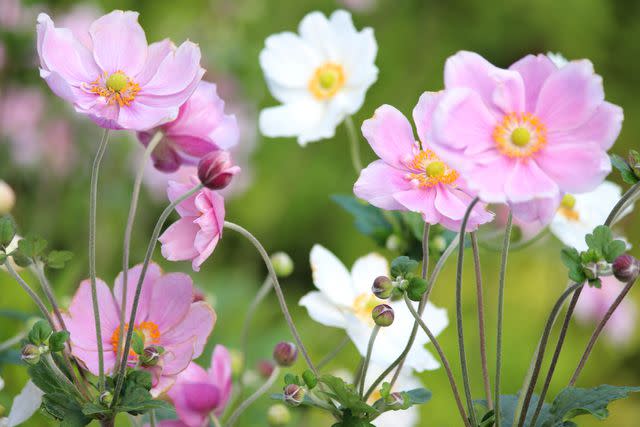
mtreasure / Getty Images
These flowers can produce many blooms. “Their centers look like little velvet buttons, and they also make an excellent cut flower with a wonderful vase life,” says Mathis. But be careful when planting these flowers. “Depending on where you live and growing conditions, anemones can either be planted in the fall and overwintered in warmer zones 8 and above or planted in late winter or early spring.”
Zones: 3 to 10
Size: 6 to 48 inches tall x 2 to 3 feet wide
Care requirements: Full sun; sandy, loamy, moist, acidic soil
Ranunculus
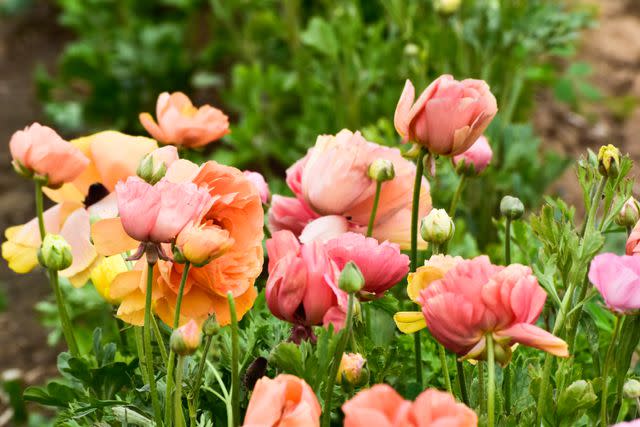
cweimer4 / Getty Images
These are some of the prettiest spring-blooming flowers. “They come in a variety of colors and like fine wine get even better as they age,” says Mathis. “They have layers of petals and make an incredible cut flower, often lasting up to 2 weeks in the vase.” But depending on where you live, ranunculus can either be planted in the fall and overwintered in warmer zones like 8 and above, she adds.
Zones: 7 to 11
Size: 2 to 24 inches tall x 3 to 6 inches wide
Care requirements: Full to partial sun; loamy, well-draining soil
Peonies
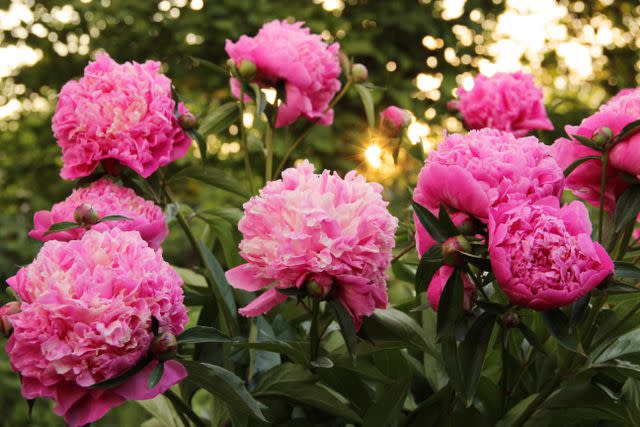
Jasenka Arbanas / Getty Images
Bees love peonies (Paeonia) and we don’t blame them. “Peonies make a great cut flower with a lovely fragrance and impressive vase life,” says Mathis. Plant these in the fall before the ground freezes. “They need to be considered a long-term investment as it's best to wait 3 years before cutting any blooms from these plants,” she says. “I promise you though, they are worth the wait.”
Zones: 3 to 9
Size: 2 to 3 feet tall x 3 to 5 feet wide
Care requirements: Full sun; loamy, well-draining soil
Related: How to Grow and Care for Peonies to Ensure Beautiful Blooms Year After Year
Crocus
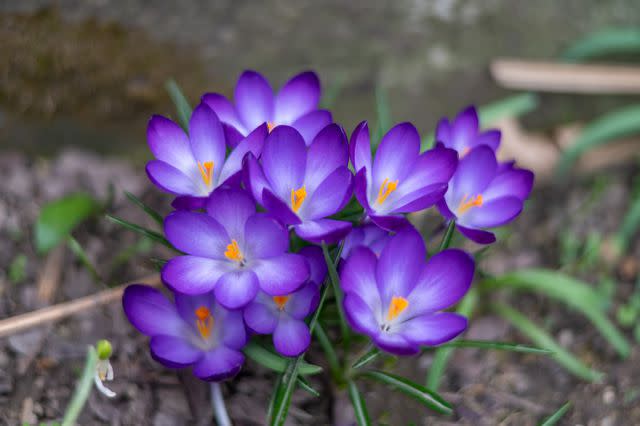
Avatarmin / Getty Images
Crocus are another great flower for a springtime garden. “These small, early blooming flowers often appear when there is still snow on the ground," says Luay Ghafari, garden consultant, published author, and founder of Urban Farm and Kitchen. “They are great for larger areas and can even be planted within lawns for spring interest.”
Zones: 3 to 8
Size: 6 inches tall x 1 to 3 inches wide
Care requirements: Full to partial sun; well-draining soil
Muscari
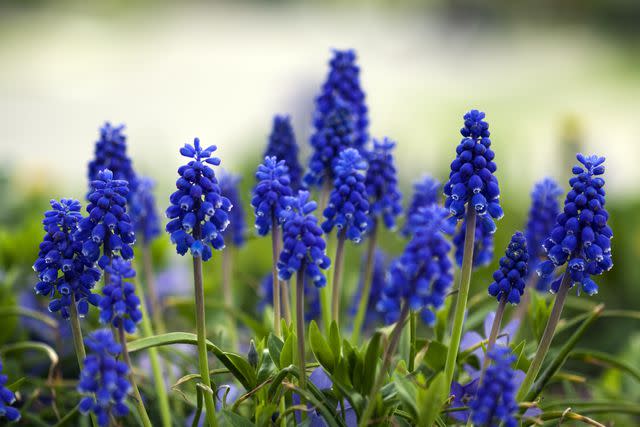
Lisa Stokes / Getty Images
Muscari, or grape hyacinth, is a great purple flower for spring. “These small, blue, purple, or white flowers grow in clusters and resemble bunches of grapes, hence the name grape hyacinth,” says Ghafari. They are delicate and often one of the earliest spring bulbs to bloom.
Zones: 4 to 8
Size: 6 to 9 inches tall x 3 to 6 inches wide
Care requirements: Full to partial sun; moist, well-draining soil
Siberian Squill
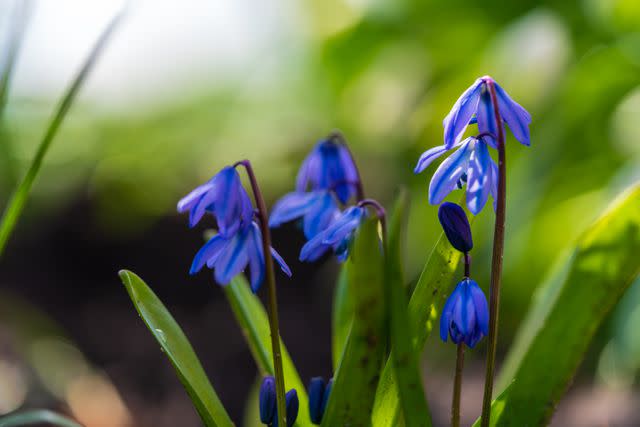
Flottmynd / Getty Images
Siberian squill (Scilla siberica) produce many tiny bell-shaped blue blooms. “Many kinds of bees are attracted to these flowers, especially if they are massed,” says Yarger. Thus, this flower will appeal to many different pollinators. “Siberian squill prefer a little more shade, so planting them near trees and shrubs is a good idea.” The flowers are also deer resistant.
Zones: 2 to 8
Size: 3 to 6 inches tall and wide
Care requirements: Partial sun; well-draining soil
Winter Aconite
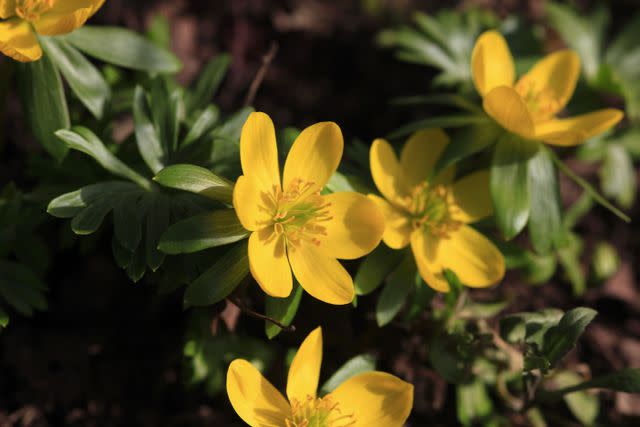
Westend61 / Getty Images
The blooms of winter aconite (Eranthis hyemalis) come in yellow and resemble buttercups. “They add a touch of sunshine to any flower bed, woodland understory, or rock garden, and are not attractive to rabbits and deer,” says Yarger. “They prefer moist, well-drained soil but will bloom in sun or shade.”
Zones: 4 to 7
Size: 6 inches tall x 4 inches wide
Care requirements: Full or partial sun; moist, well-draining soil
Checkered Lily
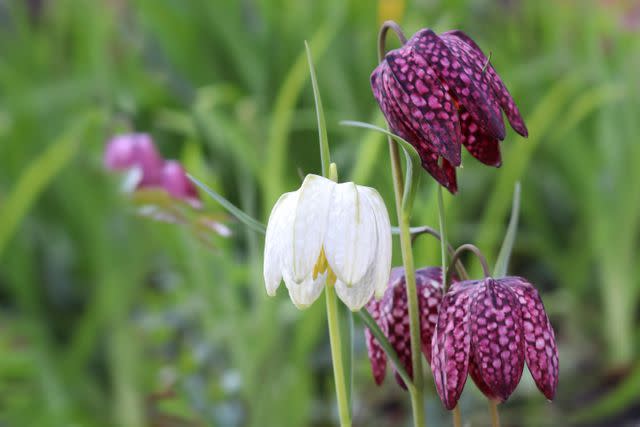
Katrin Ray Shumakov / Getty Images
Checkered lilies (Fritillaria affinis) bloom a little later in the spring. “These bell-shaped flowers enchant with their purple checkered pattern,” says Yarger. “Occasionally, a pure white one will emerge in the mix for a pleasant contrast.”
Zones: 3 to 8
Size: 1 to 4 feet tall x 6 inches to 2 feet wide
Care requirements: Full or partial sun; moist, rich soil
Read the original article on Martha Stewart.
